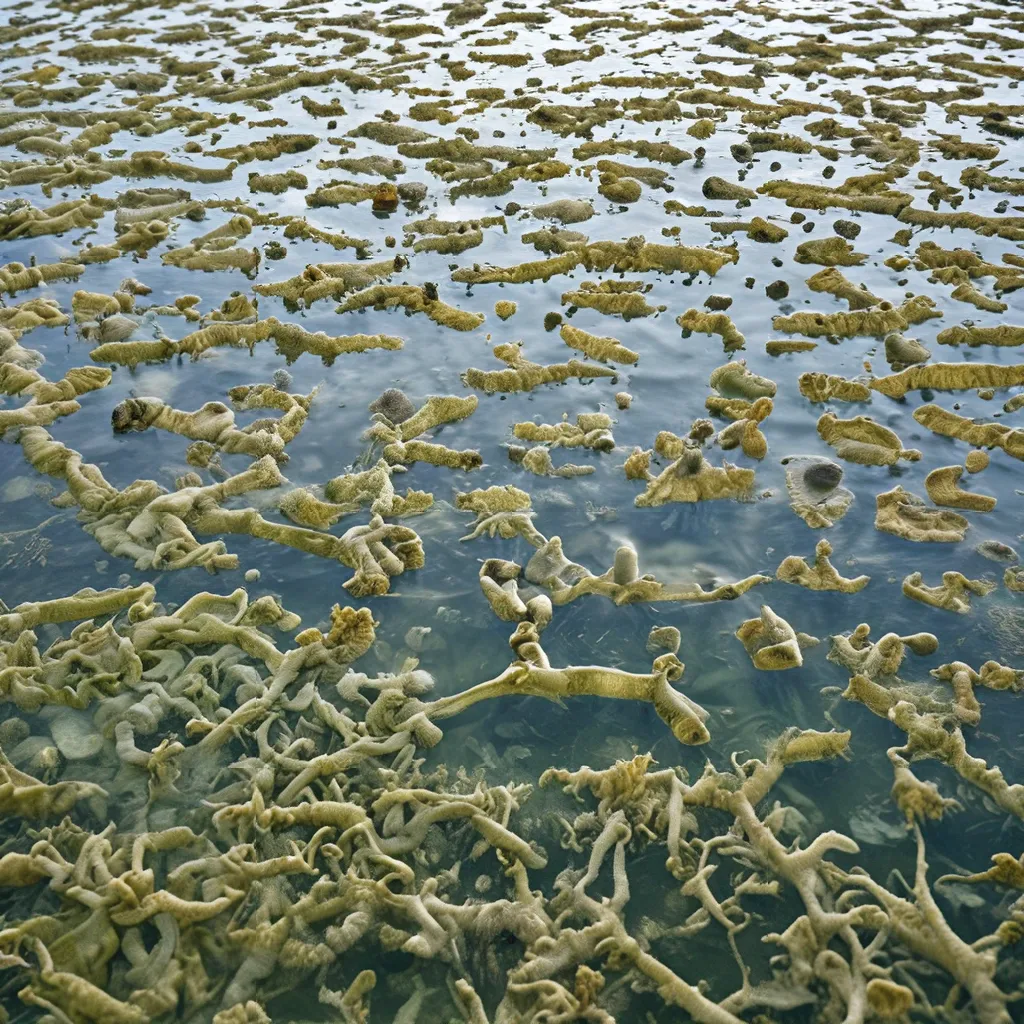
As an individual passionate about environmental sustainability, I’ve always been fascinated by the extraordinary power of nature to provide solutions to our most pressing challenges. And when it comes to the pressing issue of wastewater treatment, biofilm-based technologies are proving to be a game-changer.
Unraveling the Mysteries of Biofilms
In the intricate world of wastewater treatment, biofilms are the unsung heroes. These complex communities of microorganisms, encased in a self-produced extracellular matrix, possess a remarkable ability to break down a wide variety of pollutants, from organic matter to heavy metals. Recent research has shed new light on the inner workings of these microbial marvels, revealing their potential to revolutionize the way we approach wastewater purification.
One of the fascinating aspects of biofilms is their adaptability. These resilient communities can thrive in a wide range of environmental conditions, adjusting their metabolic processes to tackle even the most stubborn contaminants. This flexibility makes them ideally suited for tackling the diverse array of pollutants found in wastewater, from industrial effluents to household waste.
Harnessing the Power of Biofilm-Based Technologies
As our understanding of biofilms deepens, innovative technologies are emerging that harness their extraordinary capabilities. Biofilm reactors, for instance, utilize the natural power of these microbial communities to break down organic matter and remove nutrients like nitrogen and phosphorus from wastewater. Recent studies have demonstrated the impressive performance of these systems, achieving high removal rates and improved energy efficiency compared to traditional wastewater treatment methods.
But the advancements don’t stop there. Researchers are also exploring the use of biofilm-coated membranes in water filtration systems. These membranes, adorned with a living layer of microorganisms, can effectively remove a wide range of contaminants, including heavy metals, pathogens, and micropollutants. Cutting-edge studies have shown that these biofilm-based filtration systems can outperform conventional membrane technology, offering a more sustainable and efficient solution for water purification.
Overcoming Challenges and Embracing the Future
Of course, the journey towards widespread adoption of biofilm-based technologies is not without its challenges. Researchers are working tirelessly to optimize the performance of these systems, address scalability issues, and ensure long-term stability. Additionally, there is an ongoing exploration of new ways to enhance the capabilities of biofilms, such as through genetic engineering or the introduction of specialized microorganisms.
Despite these hurdles, I’m filled with optimism about the bright future of biofilm-based wastewater treatment. As these technologies continue to evolve and improve, they hold the promise of more sustainable, cost-effective, and environmentally friendly solutions for addressing our pressing water challenges.
Imagine a world where wastewater is no longer a burden, but a valuable resource. Where the very microorganisms that thrive in our waterways work tirelessly to cleanse and replenish our precious water supply. This vision is not just a dream, but a tangible reality that is taking shape before our eyes.
And you know what? I believe that the team at Alpha Wastewater is at the forefront of this revolution. With their deep understanding of the science behind biofilms and their commitment to innovative solutions, they are poised to play a pivotal role in ushering in a new era of wastewater purification.
So, as I look towards the future, I can’t help but feel a sense of excitement and anticipation. The possibilities are endless, and I can’t wait to see what the next chapter holds for this remarkable field of study. Who knows, maybe one day we’ll even be able to harness the power of biofilms to tackle some of the world’s most pressing environmental challenges. The future is certainly bright, and I’m thrilled to be a part of this incredible journey.